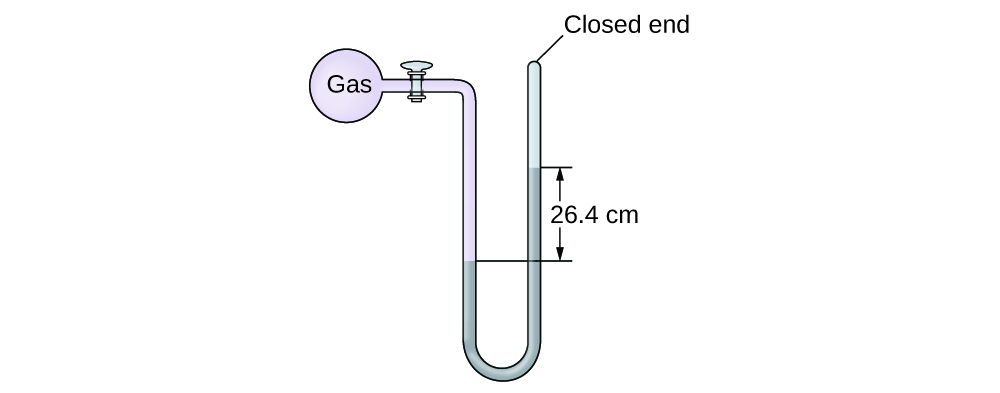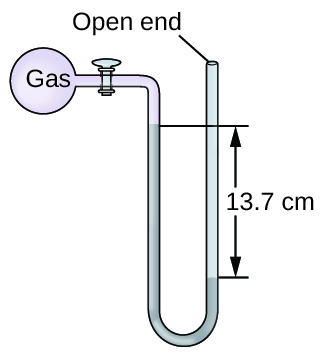Unit 1 Gases
1.1 Exercises
OpenStax
Section 1.1 Exercises
- Why are sharp knives more effective than dull knives (Hint: think about the definition of pressure)?
- Why should you roll or belly-crawl rather than walk across a thinly-frozen pond?
- A typical barometric pressure in Denver, Colorado, is 615 mm Hg. What is this pressure in atmospheres and kilopascals?
- Canadian tire pressure gauges are marked in units of kilopascals. What reading on such a gauge corresponds to 32 psi? (1 atm = 14.65 psi)
- The pressure of the atmosphere on the surface of the planet Venus is about 88.8 atm. Compare that pressure in psi to the normal pressure on earth at sea level in psi.
- Consider this scenario and answer the following questions: On a mid-August day in the northeastern United States, the following information appeared in the local newspaper: atmospheric pressure at sea level 29.97 in., 1013.9 mbar. What was the pressure in kPa?
- The pressure of a sample of gas is measured at sea level with a closed-end manometer. The liquid in the manometer is mercury. Determine the pressure of the gas in:
(a) torr
(b) Pa
(c) bar

Source: OpenStax Chemistry - The pressure of a sample of gas is measured at sea level with an open-end mercury manometer. Assuming atmospheric pressure is 760.0 mm Hg, determine the pressure of the gas in:
(a) mm Hg
(b) atm
(c) kPa

Source: OpenStax Chemistry - How would the use of a volatile liquid affect the measurement of a gas using open-ended manometers vs. closed-end manometers?
Solutions
- The cutting edge of a knife that has been sharpened has a smaller surface area than a dull knife. Since pressure is force per unit area, a sharp knife will exert a higher pressure with the same amount of force and cut through material more effectively.
- Lying down distributes your weight over a larger surface area, exerting less pressure on the ice compared to standing up. If you exert less pressure, you are less likely to break through thin ice.
- 0.809 atm; 82.0 kPa
- 2.2 × 102 kPa
- Earth: 14.7 lb in–2; Venus: 13.1 × 103 lb in−2
- (a) 101.5 kPa
- (a) 264 torr
(b) 35,200 Pa
(c) 0.352 bar - (a) 623 mm Hg
(b) 0.820 atm
(c) 83.1 kPa - With a closed-end manometer, no change would be observed, since the vaporized liquid would contribute equal, opposing pressures in both arms of the manometer tube. However, with an open-ended manometer, a higher pressure reading of the gas would be obtained than expected, since Pgas = Patm + Pvol liquid.

